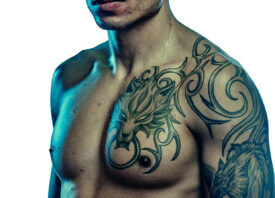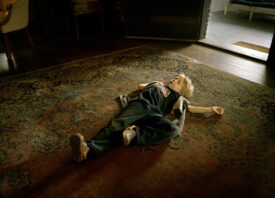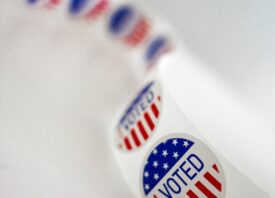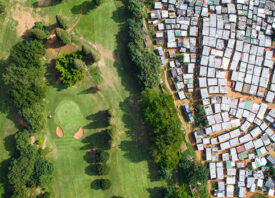Search this site
Greg Miller Has Photographed Recent History’s Most Important Elections. Here’s How He Did It.

Over the last few years, Greg Miller has covered more than half a dozen elections. Since 2004, he’s visited countless polling locations. He’s experienced disappointments and triumphs–as a voter, a citizen, and a witness to history in the making.
Election days are among the hardest subjects Miller could have chosen to photograph; they require permissions and come with restrictions, and, at the end of the day, there’s no guarantee he’ll get a single picture he loves. Still, there’s nothing quite like Election Day. It’s a subject he returns to time and again.
During these moments, Miller still thinks of his grandmother, who was thirteen when the 19th Amendment was ratified by Tennessee. With each passing year, he remembers the people he’s met–the first time voters, the poll inspectors, and everyone in between. “I am so grateful for the experience and for the generosity I have received from poll inspectors and voters over the years,” he tells us.
When we interviewed Miller as part of our upcoming project, The Photographer’s Guide to Getting Out the Vote, we decided to publish an unedited version of our conversation as well. In this piece, he takes us through the ins and outs of documenting election days, whether you’re working on assignment or documenting your own experience.
November marks an important turning point in American history. As we’ve learned in the past weeks, photography has tremendous power; when wielded with empathy and responsibility, it can not only preserve history but help shape it. Read on for Miller’s tips and insights.

How did you first start photographing elections?
“My ‘We the People’ series started as an assignment from Esquire Magazine in 2004 to photograph NYC polling stations. That year, John Kerry, the democratic presidential candidate, lost to George W Bush. The editors were expecting Kerry to win because, when Bush won, they killed the story the next week and it was never published.
“I hadn’t known what to expect, and I loved the pictures so I decided to continue the series every election since. In NYC, I was granted access because I was working for the media. In subsequent years, I have also collaborated with TIME magazine to continue the project.”
How do you go about getting permission to photograph inside polling locations?
“As has already been widely established, it is important to know your rights as a photographer. If you are working on a story about voting or simply wish to photograph inside polling locations, which is generally your right, information as well as permission to do so will rest with the office of the Secretary of State or with the local Board of Elections wherever you want to photograph.
“They often have specific guidelines, but in my experience, once you have obtained permission to photograph inside a polling place, the final say will still rest with the lead poll inspector at whatever location you decide to photograph.”

What has been your experience in polling locations?
“The atmosphere in polling locations can vary widely, from hushed silence to chaotic cacophony. When you arrive, you must first find that lead poll inspector to introduce yourself. This person could be pulling their hair out or in a great mood, you never know, therefore I recommend choosing several locations so you can bail out of a situation that becomes too restrictive.
“Lead polling inspectors have the right to remove anyone who they feel might be ‘impeding voters ability to vote.’ This can be interpreted very broadly so I am always on my very best behavior. You can also be asked to leave if they even suspect you are trying to influence the vote of someone who has not yet voted. (Don’t show up with a Bernie Sanders t-shirt, for example).
“For this reason, I try to stay away from talking for an extended time with the people inside waiting to vote. If I need to interview or get information from a voter I will wait until after they vote. If, for some reason, you need to talk to voters before they vote, I would do that outside the 75 foot electioneering boundary (or whatever it is for your state).
“One of the most difficult aspects I have found photographing polling locations is that you have to start over every time you walk into a new one. I am almost always met with suspicion and it takes time for people to warm up and charm goes a long way here.”
Do you also get permission from the people you photograph?
“If you are given permission to photograph, you can photograph the location generally at a distance without getting anyone’s consent, but just because you have obtained permission to photograph a polling place does not mean you have the right to photograph individual voters or poll inspectors.
“Depending on the picture and how you want to use it, I recommend talking to each person (as long as you are not interfering!) and tell them what you are doing, get their permission and model consent form.”

How does one go about getting in touch with the Secretary of State or with the local Board of Elections?
“Secretaries of State (SoS) and Board of Elections get media requests constantly leading up to election day so you can simply call the office for the state where you want to photograph and ask them for the correct email to send the request. I would recommend getting specific names of whomever you speak with.
“I have actually never attempted to do this as an independent photographer but I feel like it should be possible. Having said that, you don’t have to get an assignment from the New York Times or Nat Geo to make a request to cover the election in a specific place. Your college newspaper, your YouTube channel or blog qualifies as a media outlet. It all depends on how professionally you conduct yourself.
“It’s really just sending an email with your intentions, what you want to photograph, for whom and seeing what they say. The offices are generally helpful but, of course, they can say no. Before you contact the SoS or BoE, you need to think, what do you want? Do you want to photograph the people canvassing outside? The voters? The election officials?
“In the minds of government officials, there are three different ‘zones’ to a polling place which have to do with the state of mind of the voter. They are: the voter before they vote, the voter casting their ballot in the booth and the voter after they have voted. Polling stations are set up to kind of protect the mind of the voter from any campaigning in an area about 75 feet leading up to the voting booth including until the person has cast their vote. After that, the person has voted so the rules are more laxed where the concerns of officials are more about traffic flow and not about voters’ decision making.”
“There is the area outside of the polling place where people canvas voters on their way to vote. There are restrictions on how far they can do that from the voting booth. This applies to anyone including the media; therefore, you don’t want to ask or tell a voter how they will vote within the electioneering boundary (which is something like 25-75 feet from the entrance or 100 feet from a voting booth).
“Inside is the most restrictive, but again, can depend on the polling location. Some are more lenient than others, depending on the lead poll inspector, but this assumes you have a reason to be there, such as working for the media or voting yourself. And then there are the voters after they vote.
“There are rules that govern the area after a voter votes, but this applies to ‘exit polling,’ which is collecting data of any sort on how a voter voted. As far as I know, these laws do not apply if you simply photograph a voter without discussing how they voted. By constitution, elections are governed by local and state officials so you have to check with whatever state or town you are photographing what the rules are.”
Do you have any more tips for photographers hoping to document the election this November?
“I never know what to expect when I set out to photograph on Election Day and that will be especially true this year, with mask wearing and social distancing, not to mention the heightened political division right now. But I have always believed in this basic principle of photography: it’s better to take the picture and beg forgiveness than to not take the picture at all.
“If you are striking out with media outlets, SoS, and local board of elections or, let’s say, you have even obtained permission for SoS, but are striking out with the polling locations on Election Day (it has happened to me), I would go out beyond the electioneering boundary–ask someone where that is to be sure–and politely stop voters and make your case, one by one, to photograph individual voters. Outside the electioneering boundary you are free to photograph like it was any day of year.
“A series of photographs of voters on the day of the election is very powerful. It has taken a long time to get here, but the U.S. was essentially founded on the principle of one person, one vote. What does that look like? And what does that look like to you? Are they willing to tell you how they voted and put it in the caption?
“Again, if you do talk to the voters and poll inspectors you photograph, I always recommend obtaining model consent forms. If you photograph in a public place–at a distance–and do not talk to anyone, you do not need to get a model consent form. It changes the moment you talk to them.”

Do you need any paperwork to get in? What other steps are involved?
“It is different everywhere, but generally I have printed out the letter from my assigning editor and then also the email from my contact at the SoS office. Often there is a contact name of a single person from the BoE or SoS that is the lead poll inspector’s contact. You say that name, and then they will talk to you. Obviously, the sooner you get the ball rolling contacting the SoS or BoE, the better. In the past, I have been able to email the night before election day, but I would say that’s not a good idea.”
Any final words of advice?
“Last thing to remember– smile (even if it’s from behind your mask). Be kind to everyone with whom you come in contact, voters, poll inspectors, the police, everyone is on edge.
“The poll inspectors are doing this job from 6 am to 9 pm for around $150 for the day (and there is training before that). Among the many moving parts of our democracy, we pay the individuals to whom we entrust the outcome of our election about the same as a Starbucks barista, yet every poll inspector I have ever met takes it seriously. I get goosebumps when I think of them.”
See more from Greg Miller on Instagram at @gregmillerfoto.
All images © Greg Miller



